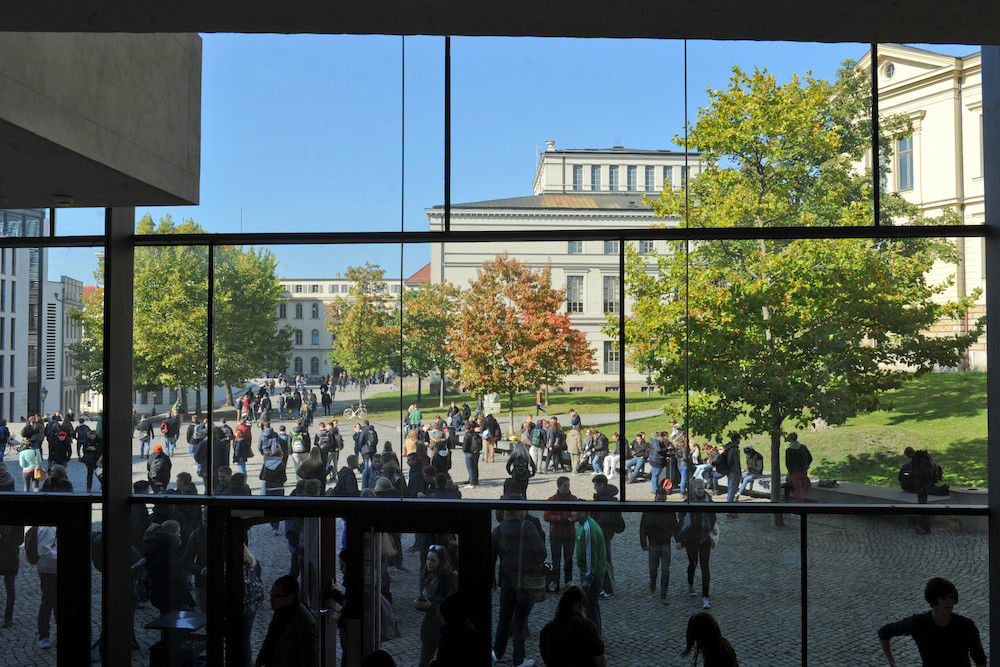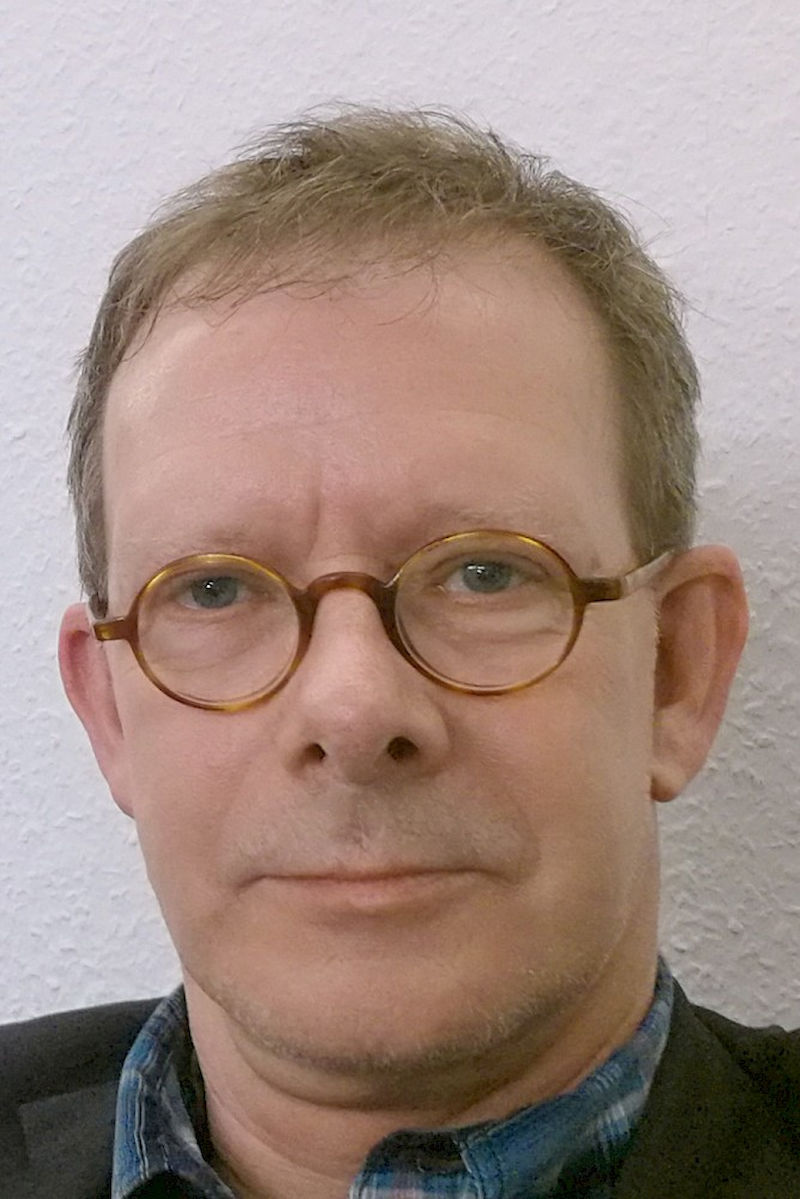A roadmap of higher education concepts

You have examined university concepts and higher education-related concepts of science in your book “Die Ideen der Universität”. What concept would you assign to the University of Halle?
Higher education institutions are generally too heterogeneous to fall under a single concept. It is a characteristic of good higher education institutions that a variety of ideas and attitudes, as well as the motivations of many individuals, find expression there. We can, however say that the University of Halle is shaped by the concepts of the “Humboldtian model of higher education” and – imposed externally – by the “Bologna Process”. It also has elements of the “higher education institution as a regional economic player” and “the engaged university”, as it offers support for start-ups and has positive effects on the region. This is a typical combination that can be found at many higher education institutions in Germany.
So, there is not a single concept for a higher education institution?
That is rarely the case. One example would be the Technical University of Munich, which very heavily follows the concept of the “higher education in competition”. And it is clear: a higher education institution that is chosen as an “University of Excellence” will also present that to the outside world. It is, however, often not the only concept that it follows.
How have you defined higher education concepts?
On the one hand, we have identified concepts that are, so to speak, formulated canonically in a concise text, e.g. the “Humboldtian university”, the “higher education institution as a service company” and the “deregulated higher education institution”. These concepts are regarded as valid by many people. On the other hand, there are concepts that are developed gradually in higher education debates and for which there are a large number of individual texts. For these, we have chosen a framework title, e.g. “competence orientation” or “the assessed higher education institution”.
What is behind the “assessed higher education institution”?
This higher education institution has a strong focus on being defined quantitatively by means of measurable performance indicators. There is no basic text for this. However, the idea is developed in many texts – and is criticised in at least as many.
You have described a total of 44 concepts. What does this variety of different ideas reveal?
First of all, it says that there really are a lot of ideas, many of which are reformulations of earlier ideas, which means that a lot is repeated. However, it is becoming clear that the expansion of higher education, i.e. the increase in participation in higher education, is associated with an expansion of higher education concepts. A distinction can be made between three normative basic orientations: conservative, market liberal and an orientation towards the creation of equal social opportunities. It is worth noting that the development of market liberal concepts is very dynamic. These include 15 concepts. The conservative stream includes just four.
Isn’t there also a lot of hot air behind many of the concepts?
Hardly; the ideas have generally been very ambitiously formulated on the basis of certain core beliefs. However, someone who does not share the relevant normative orientation is sometimes inclined to mainly find hot air.
Why do the higher education institutions need concepts at all?
There is political pressure to develop profiles. Higher education institutions respond to this by writing concepts. If a higher education institution employs a specific concept to define its mission statement and uses it for external communication, this will generally be part of the façade management. It does not mean that the entire higher education institution is really subject to this orientation. Institutes, faculties and professors still have their own ideas and motives.
Where do the concepts have most effect?
In the first place, concepts have more practical relevance in higher education policy than on the level of individual higher education institutions. The Federal Ministry of Education and Research runs funding programmes for sustainability or gender equality; in EU research policy, the concepts of “regional innovation systems” and “responsible research and innovation” are incorporated into the funding programmes. This is noted by individual universities. It is true that there is currently no higher education institution that completely follows the concept of the “sustainable university”, for example, but some have at least included this in their mission statement. From there, it can find its way into the curricula of degree programmes.
You have also included the mother of all higher education concepts, at least in Germany, the “Humboldtian model of higher education”, i.e. the unity of research and teaching. Is it still relevant?
The “Humboldtian model of higher education” is, alongside Max Weber’s “science as a vocation”, one of the two historic concepts that we have included. Both have a constant presence in debates on higher education policy and are invoked as reference concepts by many newer concepts. Thus, the “research-based learning” concept, for example, has a strong affinity to Humboldt. This is an attempt to bring key ideas of Humboldt into the 20th and 21st century. The concept of the “excellence university” also borrows from Humboldt.
On the other hand, you have not included some concepts such as the “university of professors” or “advancement through education”. Why?
These concepts have now simply become so marginal that they no longer play a role in the debates on higher education policy. The “university of professors” has been historically discredited and is no longer regarded positively. However, this does not mean that none of its aspects have been included in successor concepts.
Higher education institutions are continuously subject to trends. What ideas currently have a strong impact?
These are currently particularly those concepts that consider higher education institutions in competition, that address higher education institutions as regional economic players and that are aiming for social responsibility. The latter two points serve non-academic interests, for example in the area of transformative science, which is all about the contributions of science towards tackling the major social challenges such as climate change, nutrition, health, mobility and war and peace. And there are concepts such as the “European higher education and research area” that have come to the higher education institutions via a political initiative and were well received there. A counter example is the “Bologna Process”. The higher education institutions have been compelled to implement this, along with the concept of “competence orientation”. This concept did not find much favour and is therefore implemented only on a more formal level because it is required.
Why is the international university not regarded is a concept?
No one has yet made the effort to put this into a concept text because the international focus of academia is regarded as self-evident. The “European higher education and research area” comes close to one, however, even though it is restricted to Europe. It is a concept with clear goals: free movement of researchers, students and graduates, as well as the reciprocal recognition of academic achievements and qualifications.
A look ahead: what concepts will shape the discussions in the future?
There was great initial euphoria about the “virtual higher education institution”, for example, but there is now a certain disillusionment about it. It is, however, possible that a market-oriented concept of the virtual higher education institution will prevail. This could churn up the higher education landscape, as virtual higher education institutions are not necessarily bound to a place, do not have a local impact and are not bound by national state borders. If this proves to be a successful business model, this could lead to serious changes for conventional higher education institutions.
And what about the “higher education institution with gender equality”?
In past decades, this has been implemented more strongly on an institutional level at the higher education institutions. First, women’s officers were introduced; then they were employed full-time and received offices and staff. Today, a higher education institution can no longer afford not to work towards gender equality. There have also been and are special funding programmes from the Federal Government and the federal states, such as the programme for female professors. And there is gender research, i.e. research with an explicit focus on gender. In the academic sector, we are open about the gender equality of the higher education institution and of scholarship. In the general public, that is not so clear. Therefore, that is a communicative challenge that is frequently not tackled very well at the moment.
Who is the target audience of your book: the academic community or the practitioners in the university administration?
It is more for academics who are dealing with the topic. However, the management of higher education institutions and higher education policy makers should also know which concepts are currently dominant. The concept roadmap published by us may, for example, help those responsible for higher education policy to participate in debates more confidently.
The book:
Peer Pasternack, Daniel Hechler, Justus Henke: Die Ideen der Universität - Hochschulkonzepte und hochschulrelevante Wissenschaftskonzepte. Bielefeld 2018, 212 S., 39,70 Euro, ISBN: 978-3-946017-14-1

